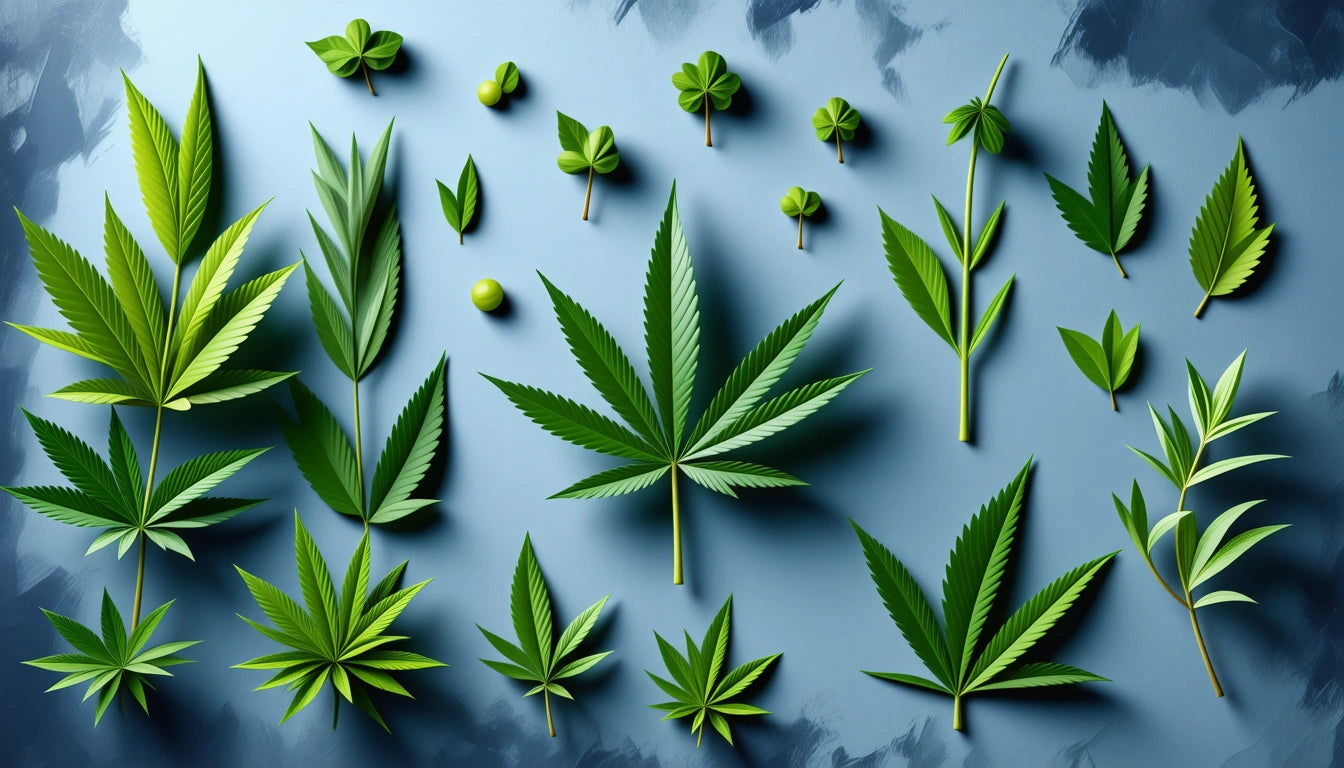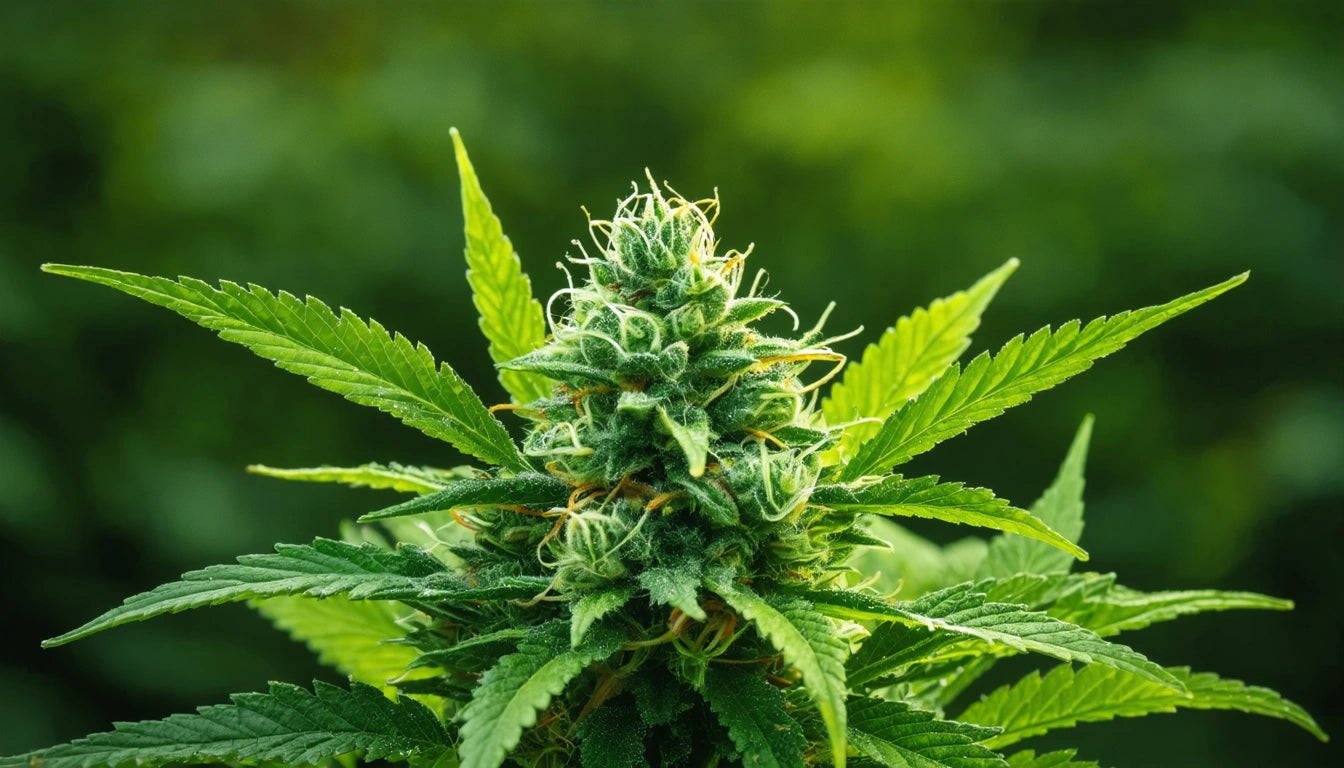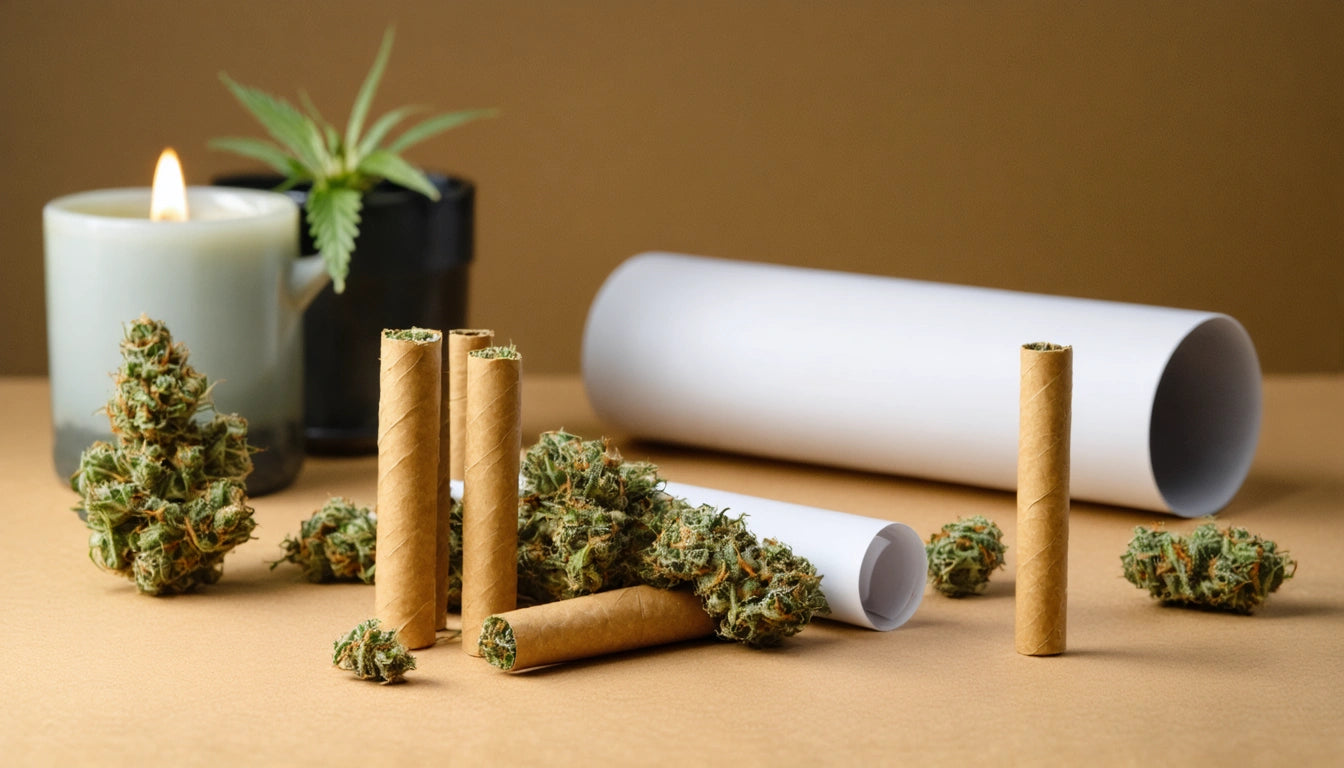Table of Contents
Identifying and Understanding Plants That Resemble Cannabis
Cannabis has a distinctive appearance, but several common plants share similar visual characteristics that can cause confusion. Whether you're a gardener, nature enthusiast, or cannabis industry professional, understanding what plants look like weed can help avoid misidentification and potential legal complications. This guide explores common cannabis lookalikes and provides clear identification methods.
Common Plants Mistaken for Cannabis
Several plants are frequently confused with cannabis due to their similar leaf patterns and growth habits. These include:
Japanese Maple (Acer palmatum)
The Japanese maple, particularly varieties with deeply serrated red or purple leaves, is often mistaken for cannabis. Its palmate leaf structure with 5-9 pointed lobes resembles the iconic cannabis leaf, especially from a distance.
Spider Flower (Cleome)
Cleome or spider flower has compound leaves with typically 5-7 leaflets radiating from a central point, creating a visual similarity to cannabis. The plant's height and overall structure can also contribute to misidentification.
Kenaf (Hibiscus cannabinus)
As its scientific name suggests, Kenaf bears a striking resemblance to cannabis. It's a fiber plant in the hibiscus family with palmate leaves that closely mimic the structure of cannabis foliage.
Cassava (Manihot esculenta)
Cassava's star-shaped leaves with narrow, pointed lobes can appear similar to cannabis, particularly during early growth stages. This food crop is widely grown in tropical regions.
Key Identifying Features of Cannabis Plants
To accurately identify what type of plant is weed, focus on these distinguishing characteristics as detailed in this comprehensive identification guide:
- Leaf Structure: Cannabis typically has serrated leaves with 5-9 finger-like leaflets arranged in a palmate pattern
- Odor: Cannabis produces a distinctive, pungent aroma, especially during flowering
- Stems: Cannabis stems are typically square or hexagonal in cross-section, not round
- Nodes: Cannabis grows with opposing nodes where branches emerge from the main stem
- Trichomes: Mature plants develop crystal-like trichomes visible under magnification
These features collectively make cannabis unique among similar-looking plants. For more detailed information on cannabis anatomy, refer to this guide on cannabis anatomy and growth.
Visual Differences Between Cannabis and Lookalikes
When comparing cannabis to similar plants, several key visual differences become apparent:
Vulcan Plants vs. Cannabis
Vulcan plants (Jatropha multifida) have deeply divided leaves that can resemble cannabis at first glance. However, Vulcan plants produce bright red or coral-colored flower clusters, while cannabis flowers are small, green, and less showy. Additionally, Vulcan plants lack the distinctive odor of cannabis.
Sweet Chestnut vs. Cannabis
Sweet chestnut leaves are elongated with pointed teeth along the margins, somewhat resembling cannabis. However, chestnut leaves are arranged alternately on stems rather than in opposing pairs, and they lack the distinct palmate structure of cannabis leaves.
For those in the cannabis industry who need to store and protect authentic product, our selection of protective storage solutions helps maintain product integrity while preventing contamination or confusion with similar-looking plant material.
Legal Considerations When Growing Similar Plants
Growing plants that look like cannabis can sometimes lead to legal complications, even when the plants are completely legal. Consider these factors:
- Potential for misidentification by law enforcement
- Neighborhood concerns or complaints
- Zoning and gardening regulations that may restrict certain plants
- Documentation that may be needed to verify non-cannabis species
Understanding cannabis terminology and cultural references can also help navigate conversations about lookalike plants.
Practical Identification Tips for Enthusiasts and Professionals
For those who need to accurately identify cannabis or similar plants, these practical approaches can help:
Visual Inspection Methods
Start with a careful visual inspection, comparing the plant to reference images. Look for the distinctive arrangement of leaflets, serrated edges, and overall growth pattern as described in this guide to what weed looks like.
Scent Identification
Cannabis produces distinctive terpenes that create its characteristic smell. Most lookalike plants lack this aroma profile. Gently rubbing a leaf between your fingers can release these scents, making identification easier.
Growth Pattern Assessment
Observe how the plant grows over time. Cannabis has specific stages of development and characteristic changes in leaf structure as it matures, which differ from lookalike plants. The historical appearance of cannabis plants has remained relatively consistent despite cultivation advances.
Professional Consultation
When in doubt, consult with horticulturists, botanists, or cannabis industry professionals who can provide expert identification. This is particularly important in legal or compliance contexts.
Understanding plant identification is crucial for those interested in finding cannabis plants or avoiding confusion with similar species.
Future of Plant Identification Technology and Education
As cannabis continues to gain legal status in more regions, the need for accurate plant identification becomes increasingly important. Several technological advances are making this easier:
- AI-powered plant identification apps that can distinguish cannabis from lookalikes
- Genetic testing kits that provide definitive species identification
- Enhanced public education about plant identification and cannabis characteristics
- Standardized reference materials for law enforcement and regulatory agencies
These developments will help reduce confusion about what plants look like weed and provide clearer guidelines for both enthusiasts and professionals. Understanding cannabis strain variations further enhances identification accuracy, as different varieties can have distinct visual characteristics.
Whether you're a gardener wanting to avoid misunderstandings or a cannabis professional needing to identify authentic plants, developing a trained eye for the subtle differences between cannabis and its lookalikes is an invaluable skill that combines botanical knowledge with practical observation.











Leave a comment
All comments are moderated before being published.
This site is protected by hCaptcha and the hCaptcha Privacy Policy and Terms of Service apply.